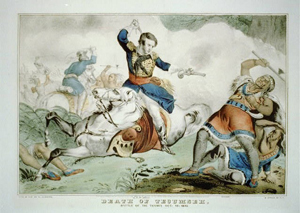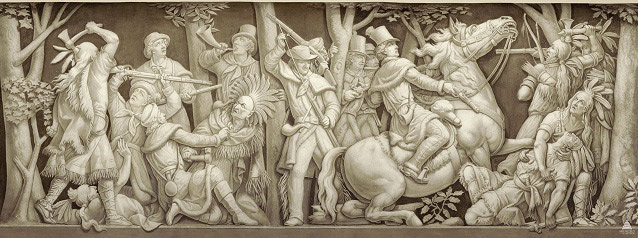“Rumpsey Dumpsey, Rumpsey Dumpsey, Colonel Johnson killed Tecumseh.” Richard M. Johnson Campaign Slogan for Vice President

Nathaniel Currier, Library of Congress Prints and Photographs Division
Over many decades, one artist after another imagined the dramatic, final moments of the life of Shawnee chief Tecumseh. Popular images like the lithograph by Nathaniel Currier graced antebellum parlors. With chaotic battle all around, a heroic American officer confronts and vanquishes a romanticized Indian adversary.

Filippo Costaggini- Architect of the Capitol
Beyond the details and the accuracy of the scene depicted—they still are debated 200 years later—in retrospect we do know that on October 5, 1813, Tecumseh’s single-minded mission, a secure Indian homeland, died with him in Ontario, Canada, at the Battle of the Thames. Each “Death of Tecumseh” image allegorically, intended or not, captured not just the last moments of the chief’s life but also the demise of his dream.
Ironically, the same moment in time also symbolized an alternative vision. Colonel Richard M. Johnson, the man who took credit for killing Tecumseh, built a political career on his disputed accomplishment. More than two decades after the war, the colonel became the ninth vice president of the United States aided by the memorable and irreverent slogan, “Rumpsey Dumpsey, Rumpsey Dumpsey, Colonel Johnson killed Tecumseh.”
Last updated: August 14, 2017
